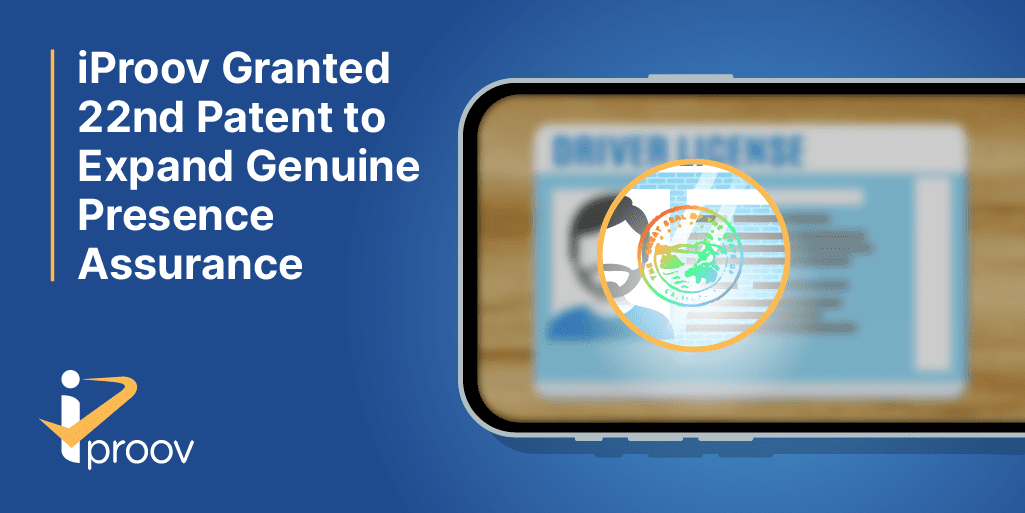February 2, 2022
Ninth U.S. patent and 22nd globally verifies photos and holograms are authentic
iProov, the world leader in online biometric face authentication, today announced the publication of its newly-granted ninth U.S. patent, which combats the identity fraud epidemic of digitally or physically altered and forged U.S. driver’s licenses and government ID cards.
This extension of iProov’s Genuine Presence Assurance® technology focuses solely on the surface of the document and detects tampering with the photo and hologram patterns. Complementary to technology other organizations have in the reading, analysis and fraud detection of documents, iProov plans to offer this new capability to its document and ID verification customers and partners.
“iProov continues to expand our focus on solving the problem of genuine presence in ways that marry usability and security,” said Andrew Bud, iProov CEO. “Presenting government-issued ID at home via a personal device is a huge convenience for consumers. However, it’s vital to confirm the document is genuine. This new technology will save the user awkwardly moving a license or ID around in front of a camera, while providing a safer, faster and cheaper alternative to time-consuming video calls with agents. Our unique technology relies upon simple, inclusive movement that harnesses a distinctive combination of distance and light.”
A user can verify a document using any device that is equipped with a camera and light (such as a mobile phone). A box appears on the screen, prompting the user to intuitively move their device to align the document into the outline, thereby changing the distance from the document. It will not be necessary to read complex instructions, maximizing inclusivity and usability. Imagery of the document is captured during the movement and analyzed to determine a likelihood that it includes indications of genuineness, such as a correct hologram, an original photograph and no surface alterations.
In development for three-and-a-half years, iProov’s new patented technology was first developed in a research project partly funded by Innovate UK, part of UK Research and Innovation.
